
Kaya: The Heartbeat of Burkina Faso's Cultural Heritage
Discover Kaya, the cultural and historical gem of Burkina Faso, where vibrant markets, sacred sites, and stunning landscapes await every traveler.
Kaya, located in the heart of Burkina Faso, is a vibrant town rich in cultural heritage and natural beauty. As the capital of the Sanmatenga Province, Kaya offers a unique blend of historical landmarks and traditional experiences that make it a must-visit for any traveler exploring West Africa. One of the main attractions in Kaya is the famous Kaya Market, a bustling hub where locals gather to trade goods and share stories. Here, visitors can immerse themselves in the local culture, sampling traditional foods and purchasing handmade crafts that reflect the region's artisanal skills. The market is not just a place to shop; it is a cultural experience that provides insight into the daily lives of the Burkinabé people. For those interested in history, the nearby sacred sites and ancient ruins offer a glimpse into the region's past. Kaya is home to several historical landmarks that tell the story of Burkina Faso's rich heritage. Visitors can explore these sites, learning about the significance of each location and the role it played in shaping the nation's history. Nature lovers will find plenty to admire in Kaya's landscapes. The area is surrounded by beautiful scenery, including rolling hills and lush vegetation. These natural features provide the perfect backdrop for outdoor activities such as hiking and bird-watching. The serene environment offers a peaceful retreat from the hustle and bustle of city life, allowing visitors to connect with nature and appreciate the beauty of Burkina Faso's countryside.
Local tips in Kaya
- Visit the Kaya Market early in the morning to experience the local culture at its liveliest.
- Wear comfortable walking shoes as the market and historical sites require a fair amount of walking.
- Carry cash, as many local vendors may not accept credit cards.
- Hire a local guide to gain deeper insights into the history and significance of the sacred sites.
- Stay hydrated and use sun protection, as the climate in Kaya can be quite warm.
Kaya: The Heartbeat of Burkina Faso's Cultural Heritage
Kaya, located in the heart of Burkina Faso, is a vibrant town rich in cultural heritage and natural beauty. As the capital of the Sanmatenga Province, Kaya offers a unique blend of historical landmarks and traditional experiences that make it a must-visit for any traveler exploring West Africa. One of the main attractions in Kaya is the famous Kaya Market, a bustling hub where locals gather to trade goods and share stories. Here, visitors can immerse themselves in the local culture, sampling traditional foods and purchasing handmade crafts that reflect the region's artisanal skills. The market is not just a place to shop; it is a cultural experience that provides insight into the daily lives of the Burkinabé people. For those interested in history, the nearby sacred sites and ancient ruins offer a glimpse into the region's past. Kaya is home to several historical landmarks that tell the story of Burkina Faso's rich heritage. Visitors can explore these sites, learning about the significance of each location and the role it played in shaping the nation's history. Nature lovers will find plenty to admire in Kaya's landscapes. The area is surrounded by beautiful scenery, including rolling hills and lush vegetation. These natural features provide the perfect backdrop for outdoor activities such as hiking and bird-watching. The serene environment offers a peaceful retreat from the hustle and bustle of city life, allowing visitors to connect with nature and appreciate the beauty of Burkina Faso's countryside.
When is the best time to go to Kaya?
Iconic landmarks you can’t miss
Parc Bangr Weogo
Discover the serene beauty of Parc Bangr Weogo, an urban oasis in Ouagadougou perfect for nature lovers and family outings.

Ouagadougou Thomas Sankara International Airport
Experience the vibrant culture of Burkina Faso at Ouagadougou Thomas Sankara International Airport, your essential gateway to the heart of West Africa.

Ciné Neerwaya
Discover the heart of Burkinabé cinema at Ciné Neerwaya, where local culture meets the magic of film in Ouagadougou.

Monument of National Heroes
Discover the Monument of National Heroes in Ouagadougou, a stunning tribute that encapsulates Burkina Faso's rich history and cultural heritage.

KB et frères
Explore the architectural beauty and cultural significance of KB et Frères Mosque, a must-visit landmark in Ouagadougou, Burkina Faso.

BIBI PARC
Experience the thrill and joy of BIBI PARC, Ouagadougou's premier amusement park offering fun-filled adventures for families and thrill-seekers alike.

Grande Mosquée de Bobo-Dioulasso
Experience the Grande Mosquée de Bobo-Dioulasso, an exquisite blend of Islamic architecture and local culture in the heart of Burkina Faso.

Villa Kaya Ouagadougou
Discover the rich flavors of Burkinabé cuisine at Villa Kaya, a charming restaurant and hotel in Ouagadougou offering authentic local dishes.
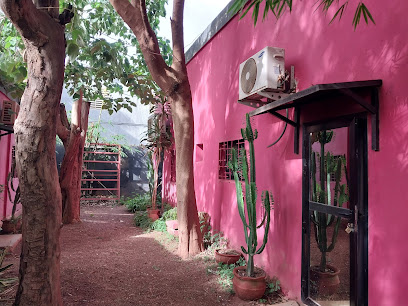
Église de Dapoya
Explore the stunning architecture and serene atmosphere of Église de Dapoya, a captivating church in the heart of Ouagadougou, Burkina Faso.

Sculptures de Laongo
Explore Sculptures de Laongo, an enchanting open-air sculpture park showcasing the beauty of granite art in Burkina Faso's captivating landscapes.

Mairie de Kaya
Explore Kaya's cultural essence at the Mairie de Kaya, where local history meets vibrant community life in the heart of Burkina Faso.

Place De La Nation De Kaya
Experience the vibrant cultural essence of Burkina Faso at Place De La Nation De Kaya, a hub for performing arts and community celebrations.

Parc urbain Bangr Weoogo
Explore the lush landscapes and vibrant wildlife of Parc Urbain Bangr Weoogo, an urban park in Ouagadougou perfect for relaxation and cultural experiences.
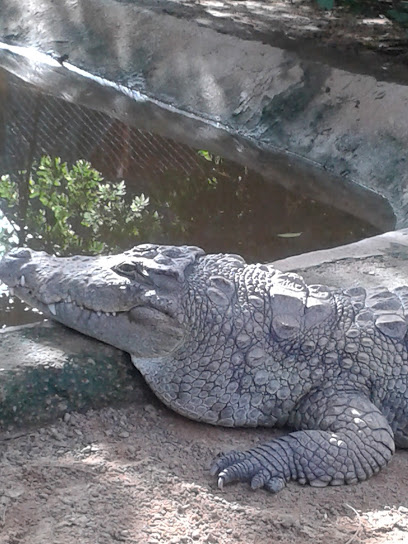
Les Cascade de Banfora
Explore the breathtaking beauty of Les Cascade de Banfora, a must-visit natural attraction in Burkina Faso with stunning waterfalls and serene landscapes.

Ruins of Loropéni
Explore the ancient ruins of Loropéni, a UNESCO World Heritage site that showcases the remarkable history and architecture of Burkina Faso's past.

Unmissable attractions to see
Parc Bangr Weogo
Discover the serene beauty of Parc Bangr Weogo, a lush urban park in Ouagadougou teeming with wildlife and cultural experiences.
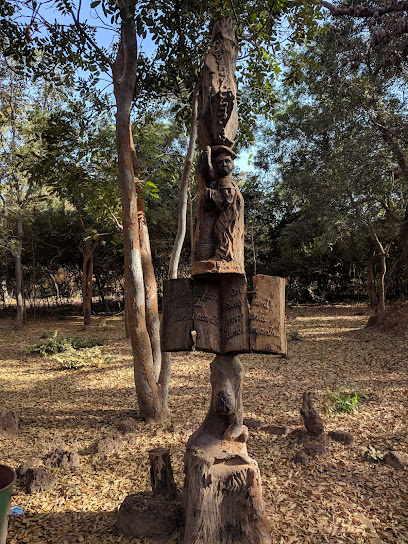
FESPACO
Experience FESPACO, Africa's premier film festival in Ouagadougou, where vibrant cinema meets cultural celebration in an unforgettable setting.

Ouagadougou Cathedral
Discover the stunning architecture and serene atmosphere of Ouagadougou Cathedral, a cultural and spiritual landmark in the heart of Burkina Faso.

Monument of National Heroes
Discover the Monument of National Heroes in Ouagadougou, a majestic tribute to bravery and a symbol of Burkina Faso's rich heritage.

KB et frères
Explore the spiritual and cultural heart of Burkina Faso at KB et Frères, next to the stunning Grand Mosque of Ouagadougou.

BIBI PARC
Experience the thrill of fun and adventure at BIBI PARC, Ouagadougou's premier amusement park, perfect for families and thrill-seekers alike.

Faso Parc
Discover the joy of laughter and adventure at Faso Parc, Ouagadougou's premier amusement park, perfect for family fun and unforgettable memories.

Mémorial Thomas Sankara
Discover the legacy of Thomas Sankara at the Mémorial, a museum dedicated to his revolutionary ideals and Pan-African vision in Ouagadougou, Burkina Faso.

National Museum of Burkina Faso
Explore the National Museum of Burkina Faso, where the vibrant history and culture of West Africa come alive through captivating exhibits and artifacts.

Musée de la Musique de Ouagadougou
Explore the vibrant musical heritage of Burkina Faso at Ouagadougou's Musée de la Musique, a cultural treasure trove for music lovers.

VITHRO Espace
Experience authentic Burkinabé cuisine and warm hospitality at VITHRO Espace, the heart of Ouagadougou's vibrant dining scene.

rose de canaan
Discover the tranquility of Rose de Canaan, a beautiful garden in Ouagadougou, perfect for relaxation and cultural experiences amidst vibrant nature.

Parc urbain Bangr Weoogo
Explore the tranquility of Parc Urbain Bangr Weoogo, a lush urban park in Ouagadougou, perfect for relaxation, nature walks, and cultural experiences.

Opera Village Africa
Explore the vibrant essence of African culture at Opera Village Africa, a unique cultural center and art haven in Burkina Faso, offering immersive experiences and artistic adventures.

PUB BAR
Experience the lively atmosphere and local flavors at PUB BAR, a must-visit attraction in Ouagadougou for tourists seeking authentic Burkinabé culture.

Essential places to dine
SIKA LOUNGE
Discover SIKA LOUNGE in Ouagadougou: A lively bar and restaurant known for delicious burgers and vibrant ambiance.

Chez Simon
Discover authentic Lebanese cuisine at Chez Simon in Ouagadougou - a delightful blend of tradition and taste awaits!

Chick Restaurant
Experience the vibrant flavors of Africa at Chick Restaurant in Ouagadougou – where every meal tells a story.

benoua lodge
Experience exquisite local flavors at Benoua Lodge, Ouagadougou's premier destination for authentic Burkinabé cuisine.

LAA VITA RESTAURANT
Discover authentic Burkinabé cuisine at LAA VITA RESTAURANT in Ouagadougou - A culinary journey filled with local flavors.

Villa Kaya Ouagadougou
Experience authentic Burkinabé cuisine at Villa Kaya in Ouagadougou - where flavor meets hospitality.

Le Coq Bleu
Experience authentic flavors at Le Coq Bleu - where local ingredients meet culinary creativity in Ouagadougou.

HAPPY HOUSE - Gastronomie Ivoirienne
Delight in authentic Ivorian dishes at Happy House in Ouagadougou – a culinary journey awaits you!

THE GARDEN Restaurant - Lounge
Discover exceptional local cuisine amidst tranquil surroundings at The Garden Restaurant in Ouagadougou - an unforgettable dining experience.

Restaurant La Villa
Discover the authentic flavors of Burkina Faso at Restaurant La Villa in Ouagadougou - where tradition meets culinary excellence.

Local Grill Ouagadougou
Experience authentic Burkinabé cuisine at Local Grill Ouagadougou – where flavor meets tradition in every bite.

Royal Garden Restaurant
Experience the rich flavors of India at Royal Garden Restaurant in Ouagadougou – where authentic cuisine meets warm hospitality.

Restaurant AMPO
Discover authentic Burkinabé cuisine at Restaurant AMPO in Dagnoen - a delightful dining experience awaits you!

YELBA
Discover the vibrant tastes of Burkina Faso at YELBA in Ouagadougou's Zogona district - A delightful culinary journey awaits!

Restaurant Aboussouan
Savor the authentic tastes of West Africa at Restaurant Aboussouan - a culinary treasure in Ouagadougou.

Markets, malls and hidden boutiques
Grand Marché de Kaya
Discover the lively Grand Marché de Kaya, a vibrant market showcasing the rich culture and local goods of Burkina Faso.

Hall des artisans
Explore Hall des Artisans in Kaya for unique local crafts and immerse yourself in the vibrant culture of Burkina Faso.

Librairie Papeterie de Kaya
Discover unique products and local culture at Librairie Papeterie de Kaya, a vibrant shopping mall in the heart of Burkina Faso's Kaya.

SAM-PHOTO
Explore SAM-PHOTO in Kaya for an unforgettable shopping experience filled with local culture, unique crafts, and delicious cuisine.

EKSC Ets kissi sida la confiance
Experience the vibrant shopping culture of Kaya at EKSC Ets Kissi Sida La Confiance, where local crafts meet modern retail in a lively atmosphere.

UTOF
Explore UTOF, the top electronics store in Kaya, offering a wide selection of gadgets and exceptional customer service for all your tech needs.

Icone Store
Discover the latest electronics and gadgets at Icone Store in Kaya, where technology meets exceptional customer service.

Yaourt saman
Experience the cozy charm of Yaourt Saman, a delightful coffee shop in Kaya where local flavors and friendly ambiance unite.

SORÉ Beauté kaya
Experience the vibrant blend of culture and retail at SORÉ Beauté kaya, the ultimate shopping destination in Kaya, Burkina Faso.

Alimentation Koom
Discover the flavors of Burkina Faso at Alimentation Koom, Kaya's premier grocery store offering local delicacies and fresh produce.

NEWS ARRIVAGES
Explore the latest footwear trends at NEWS ARRIVAGES in Kaya, where style meets comfort for every occasion.

Zaky couture kaya
Discover the vibrant world of textiles at Zaky Couture Kaya, where local craftsmanship meets personalized tailoring in the heart of Burkina Faso.

Boutique petit bosd
Discover Boutique Petit Bosd, Kaya's premier shopping mall, featuring local crafts, international brands, and a vibrant atmosphere for an unforgettable shopping experience.

Access World Products
Explore Access World Products in Kaya, where local charm meets a diverse selection of goods for the discerning traveler.
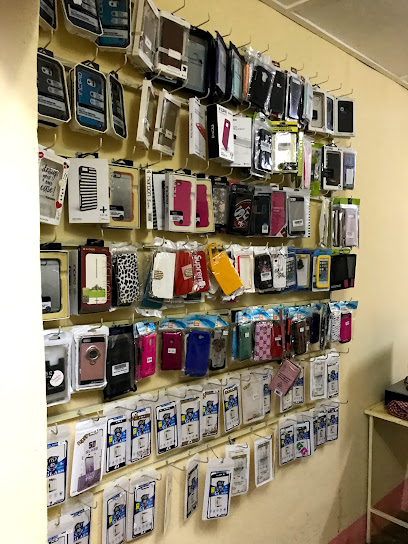
Boulengerie koom
Discover the delightful flavors of Boulengerie Koom, a charming bakery in Kaya, offering a delectable range of freshly baked treats and local pastries.

Essential bars & hidden hideouts
WAPASSI
Experience the vibrant nightlife of Kaya at WAPASSI, where local flavors meet a friendly atmosphere for an unforgettable evening.

Trois Luttes
Discover the vibrant nightlife at Trois Luttes, a lively bar in Kaya offering a great selection of drinks and a warm, inviting atmosphere.

24 heures chrono
Discover the lively 24 Heures Chrono in Kaya, where refreshing drinks and a vibrant atmosphere create unforgettable nightlife experiences.

Le Palais
Experience the vibrant nightlife of Kaya at Le Palais, where diverse drinks and a lively atmosphere await every visitor.
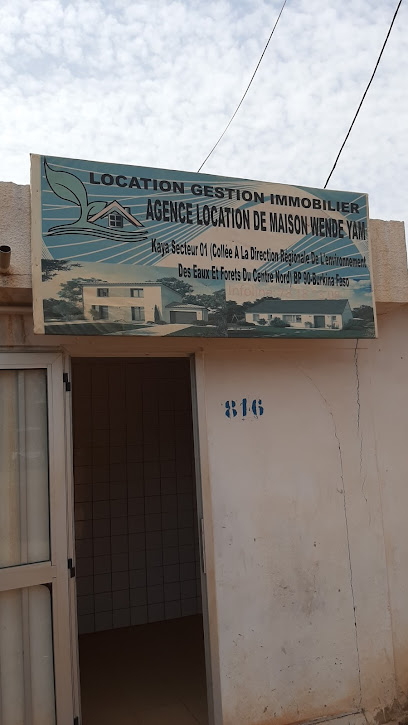
DAISHIKANE BAR VIP wagess plus
Discover the lively nightlife of Kaya at Daishikane Bar VIP Wagess Plus, where local flavors and friendly vibes come together for an unforgettable experience.
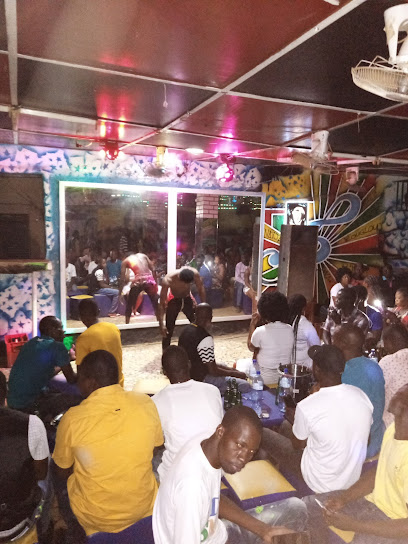
Maquis le TARKAY
Discover local flavors and a lively atmosphere at Maquis le TARKAY in Kaya, the perfect bar for an authentic night out.
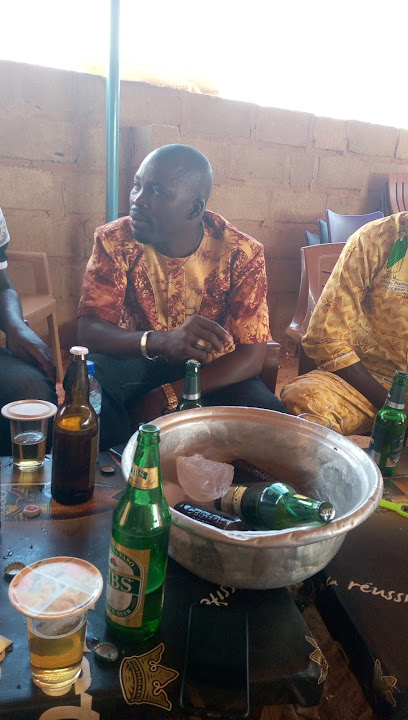
Escale Bar Dancing Kaya
Experience the vibrant nightlife of Kaya at Escale Bar Dancing, where music, dance, and delicious drinks blend for an unforgettable evening.

La Gamelle
Discover the lively ambiance and authentic flavors of Kaya at La Gamelle, the perfect bar for relaxation and local delicacies.

Maquis Bar Ya Paalé
Experience the vibrant nightlife and authentic local flavors at Maquis Bar Ya Paalé in Kaya, a must-visit for every traveler.

Jardin du Maire
Discover the serene ambiance and local flavors at Jardin du Maire, a charming bar in the heart of Kaya, perfect for unwinding and cultural immersion.

La Cour des Grands
Experience the vibrant nightlife at La Cour des Grands, a lively bar in Kaya that offers a perfect blend of local culture and refreshing drinks.

Show Room
Discover the vibrant atmosphere of Show Room in Kaya, a local bar offering a diverse drink selection and lively entertainment for an unforgettable night.

Bar la Différence
Experience the vibrant nightlife at Bar la Différence in Kaya, where refreshing drinks and a lively atmosphere await every visitor.

Kaya Mix
Experience the vibrant nightlife of Kaya at Kaya Mix, where local flavors and international drinks create unforgettable evenings.

Bar Dancing Amitié
Experience the vibrant nightlife at Bar Dancing Amitié in Kaya, a lively bar where locals and tourists come together to dance and enjoy great drinks.

Local Phrases about Kaya
-
- HelloSalut
[sah-loo] - GoodbyeAdieu
[ah-dyoo] - YesOui
[wee] - NoNon
[non] - Please/You're welcomeS'il vous plaît
[seel voo pleh] - Thank youMerci
[mehr-see] - Excuse me/SorryPardon
[pahr-dohn] - How are you?Comment ça va?
[koh-mohn sah vah] - Fine. And you?Bien. Et toi?
[byen. ay twah] - Do you speak English?Parles-tu anglais?
[pahr-lay too ahn-glay] - I don't understandJe ne comprends pas
[zhuh nuh kohm-prahnd pah]
- HelloSalut
-
- I'd like to see the menu, pleaseJe voudrais voir le menu, s'il vous plaît
[zhuh voo-dray vwahr luh meh-nyoo, seel voo pleh] - I don't eat meatJe ne mange pas de viande
[zhuh nuh mahnj pah deh vyand] - Cheers!Santé!
[sahn-tay] - I would like to pay, pleaseJe voudrais payer, s'il vous plaît
[zhuh voo-dray pay-ay, seel voo pleh]
- I'd like to see the menu, pleaseJe voudrais voir le menu, s'il vous plaît
-
- Help!Au secours!
[oh suh-koor] - Go away!Allez-vous en!
[ah-lay vooz ahn] - Call the Police!Appelez la police!
[ah-puh-lay lah poh-lees] - Call a doctor!Appelez un docteur!
[ah-puh-lay uh dohk-tuhr] - I'm lostJe suis perdu
[zhuh swee pair-doo] - I'm illJe suis malade
[zhuh swee mah-lahd]
- Help!Au secours!
-
- I'd like to buy...Je voudrais acheter...
[zhuh voo-dray zah-sheh-tay] - I'm just lookingJe regarde juste
[zhuh ruh-gahrd zhewst] - How much is it?Combien ça coûte?
[kohm-byen sah koot] - That's too expensiveC'est trop cher
[say troh shair] - Can you lower the price?Pouvez-vous baisser le prix?
[poo-veh voo bay-say luh pree]
- I'd like to buy...Je voudrais acheter...
-
- What time is it?Quelle heure est-il?
[kell uhr ay-teel] - It's one o'clockIl est une heure
[eel ay oon uhr] - Half past (10)Dix et demi
[dees ay dem-ee] - MorningMatin
[mah-tahn] - AfternoonAprès-midi
[ah-pray mee-dee] - EveningSoir
[swahr] - YesterdayHier
[yehr] - TodayAujourd'hui
[oh-zhoor dew-ee] - TomorrowDemain
[duh-mahn] - 1Un
[uhn] - 2Deux
[duh] - 3Trois
[twah] - 4Quatre
[kat] - 5Cinq
[sank] - 6Six
[sees] - 7Sept
[seht] - 8Huit
[wheet] - 9Neuf
[nuf] - 10Dix
[dees]
- What time is it?Quelle heure est-il?
-
- Where's a/the...?Où est...?
[oo ay] - What's the address?Quelle est l'adresse?
[kell ay lah-dress] - Can you show me (on the map)?Pouvez-vous me montrer (sur la carte)?
[poo-veh voo muh mohn-tray (soor lah kart)] - When's the next (bus)?Quand est le prochain (bus)?
[kahn ay luh proh-shahn (boos)] - A ticket (to ....)Un billet (pour ....)
[uhn bee-yay (poor)]
- Where's a/the...?Où est...?
History of Kaya
-
Kaya, located in the north-central region of Burkina Faso, has its roots in the pre-colonial era when it served as a significant settlement for the Mossi people. The Mossi, one of the major ethnic groups in Burkina Faso, established Kaya as part of their kingdom, which played a crucial role in regional trade and politics.
-
During the late 19th and early 20th centuries, Burkina Faso, then known as Upper Volta, came under French colonial rule. Kaya, like many other towns, experienced significant changes during this period. The French administration set up infrastructure, including schools and administrative buildings, which laid the groundwork for modern governance and education systems in the region.
-
Kaya was an important site during the independence movement of Burkina Faso. In the mid-20th century, the local population actively participated in the push for independence from French colonial rule. Kaya's contribution to the nationalistic fervor helped pave the way for Burkina Faso’s eventual independence in 1960.
-
Kaya is renowned for its rich cultural heritage, particularly its traditional Mossi festivals. The Nabasga festival, celebrated annually, is one of the most significant cultural events in Kaya. It showcases the vibrant traditions of the Mossi people, including music, dance, and storytelling, and serves as a vital means of preserving the cultural identity of the community.
-
In recent decades, Kaya has seen considerable economic growth and modernization. It has developed into a hub for trade and commerce in the region, with markets bustling with local produce, crafts, and textiles. The town's strategic location has made it a crucial point for transportation and logistics, further boosting its economic significance.
-
Kaya, like many parts of Burkina Faso, has been affected by recent conflicts and security challenges in the Sahel region. The town has become a refuge for internally displaced persons (IDPs), highlighting its role in humanitarian efforts. Despite these challenges, Kaya continues to demonstrate resilience and a strong sense of community.
-
Kaya boasts several architectural landmarks that reflect its historical and cultural evolution. The Grand Mosque of Kaya, with its distinctive Sudano-Sahelian architecture, stands as a testament to the town's Islamic heritage. Additionally, colonial-era buildings and traditional Mossi compounds offer glimpses into the town's diverse architectural influences.
Kaya Essentials
-
Kaya is located in the north-central region of Burkina Faso. The nearest international airport is Ouagadougou Airport (OUA), approximately 100 kilometers away. From Ouagadougou, you can take a bus or hire a taxi to Kaya. The bus journey takes around 2 to 3 hours, depending on traffic and road conditions. Alternatively, you can rent a car for more flexibility in your travel plans.
-
Within Kaya, local taxis and moto-taxis are the most common forms of transportation. They are relatively inexpensive and can be hailed on the street. Buses and minibuses (known locally as 'bush taxis') also operate within the town and connect to nearby villages. For exploring the surrounding areas, renting a car is a convenient option, but be aware that road conditions can vary.
-
The official currency in Burkina Faso is the West African CFA franc (XOF). Credit cards are not widely accepted, so it is advisable to carry cash. ATMs are available in Kaya, but it’s a good idea to withdraw sufficient cash in Ouagadougou before traveling. Small denominations are useful for local markets and smaller establishments.
-
Kaya is generally safe for tourists, but it’s important to take standard precautions. Avoid walking alone at night, especially in less populated areas, and keep an eye on your belongings in crowded places. Some neighborhoods have higher crime rates, so it's advisable to ask locals or your accommodation for up-to-date safety advice. Always stay vigilant and aware of your surroundings.
-
In case of emergency, dial the local emergency number 17 for police assistance. Kaya has medical facilities, but for serious medical emergencies, it may be necessary to travel to Ouagadougou. It is recommended to have comprehensive travel insurance that covers medical emergencies. Pharmacies are available in town for purchasing over-the-counter medications.
-
Fashion: Do dress modestly, especially when visiting religious or cultural sites. Avoid wearing revealing clothing. Religion: Do respect local customs and traditions. Always ask for permission before taking photos of people or religious activities. Public Transport: Do be respectful and courteous to fellow passengers. Don't eat or drink on public transport. Greetings: Do greet people with a handshake or a friendly wave. A slight bow of the head is also a sign of respect. Eating & Drinking: Do try local dishes and accept food offerings graciously. Don't refuse hospitality, as it can be considered impolite.
-
To experience Kaya like a local, visit the bustling local markets where you can buy fresh produce and traditional Burkinabé goods. Engage with locals, as they are often friendly and willing to share stories about the town's history and culture. Don't miss the opportunity to explore the nearby natural attractions, such as the Yatenga region, known for its beautiful landscapes and traditional villages.
Trending Landmarks in Kaya
-
Parc Bangr Weogo
-
Ouagadougou Thomas Sankara International Airport
-
Ciné Neerwaya
-
Monument of National Heroes
-
KB et frères
-
BIBI PARC
-
Grande Mosquée de Bobo-Dioulasso
-
Villa Kaya Ouagadougou
-
Église de Dapoya
-
Sculptures de Laongo
-
Mairie de Kaya
-
Place De La Nation De Kaya
-
Parc urbain Bangr Weoogo
-
Les Cascade de Banfora
-
Ruins of Loropéni
Nearby Cities to Kaya
-
Things To Do in Ouagadougou
-
Things To Do in Ouahigouya
-
Things To Do in Koudougou
-
Things To Do in Dédougou
-
Things To Do in Niamey
-
Things To Do in Wa
-
Things To Do in Bobo-Dioulasso
-
Things To Do in Tamale
-
Things To Do in Sunyani
-
Things To Do in Atakpamé
-
Things To Do in Kpalimé
-
Things To Do in Kumasi
-
Things To Do in Notse
-
Things To Do in Ho
-
Things To Do in Bamako





